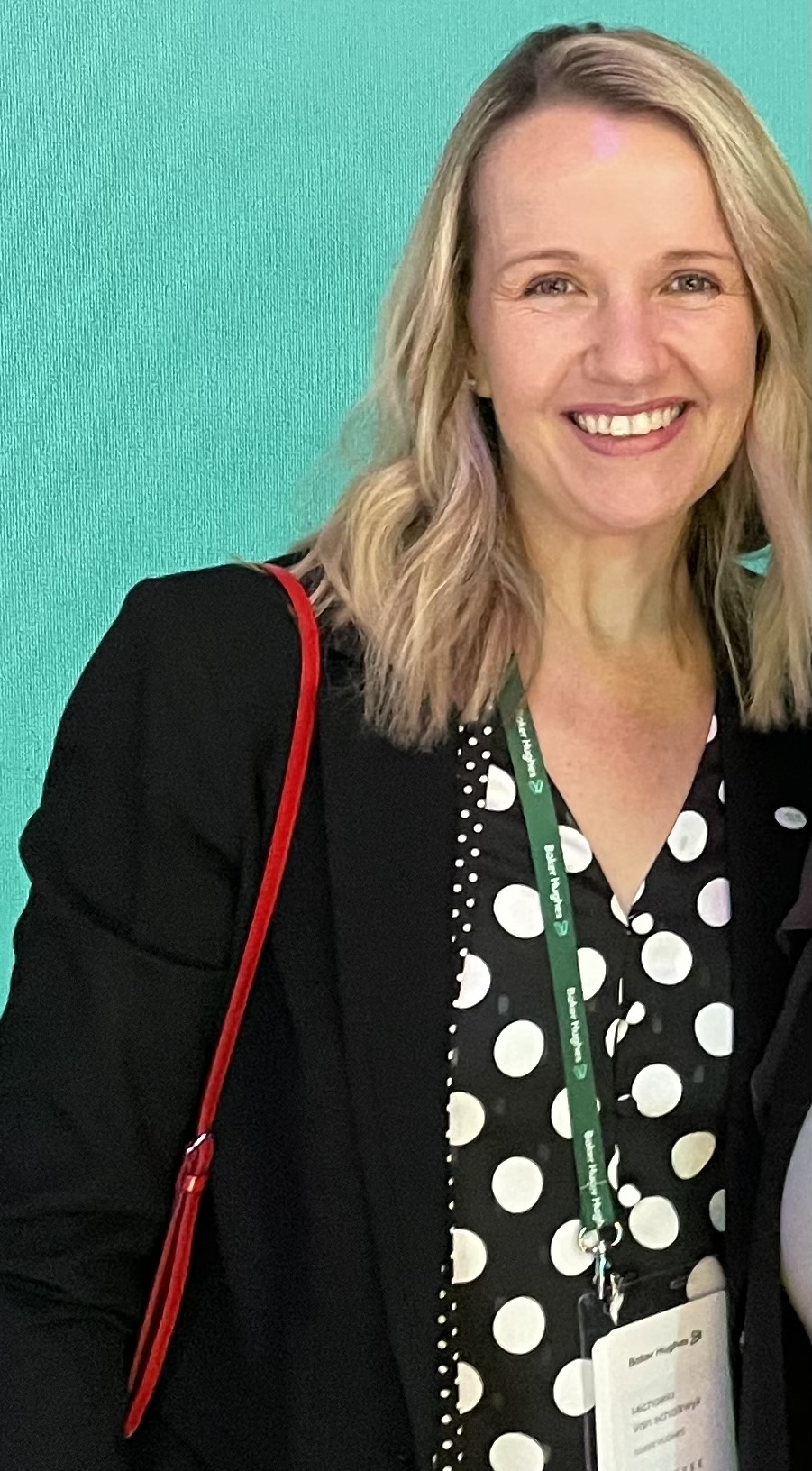Baker Hughes is evolving. Vice President of Change Management, Michaela Van Schalkwyk, explains how the organization is embracing and embedding change.
Baker Hughes is no stranger to change having navigated significant change over the past five years, with varied change management experiences. As we continue to transform our business to tackle the energy trilemma and progress our solutions to achieve cleaner energy and a net-zero future in a systemic and sustainable way, we are rethinking how we manage change.
Change is no longer a singular initiative or project with a defined start and end. It is, and will be, continuous, and the pace is accelerating. Change is all about people – therefore we need to rethink how we effectively lead our people and how we engage our teams through change in a positive way. We need to rethink how we champion, influence, and build commitment to change.
Our ability to successfully embrace and embed change is quickly becoming a critical skill and a source of competitive advantage.

At university, I studied Information Systems and Business Management. On entering the workforce, I was looking for an opportunity to leverage both areas of study. I started my career working for a consulting company enabling complex transformations through the implementation of ERP systems like SAP and Oracle, etc. It was the perfect combination of maintaining my exposure to technology and leveraging business acumen by understanding how organizations operate and what opportunities could be realized to improve those operations. Change management enabled those new ways of working to realize tangible business value.
I have been fortunate to have a global career partnering with many large organizations, across diverse industries, and geographies, expanding my focus on different types of transformation. Each transformation has been unique because no two people respond to change in the same way, therein lies the complexity and my interest in building a dedicated career in change management.
Currently, I am leveraging my 20+ years of managing change by mitigating or managing risks, to partner with my team and collaborate with key stakeholders across our enterprise, to embrace change by focusing on the positive possibilities and opportunities of change and embed change through more agile approaches.
I am also highly motivated by the opportunity to support our customers with adopting and realizing value from our solutions by integrating change management into some of our external solutions and enabling a strengthened customer experience.
I am also highly motivated by the opportunity to support our customers with adopting and realizing value from our solutions
Michaela Van Schalkwyk,
Change management is both an art and a science. In terms of the science, there is a proven methodology, based on a global standard. At Baker Hughes we have leveraged this globally recognized standard but have created our own Change Management methodology that focuses on what we believe to be the critical and systematic steps to effectively lead and engage our teams through change.
The art is in meeting people where they are to bring them through the change successfully. People are complex, so it's about being able to understand the impacts of the change and what's going to resonate with them to build commitment to new ways of working.
I advocate for answering the question: Why? As children, questioning ‘why’ is how we learnt. That way of learning is still relevant and understanding why we're embarking on a change, why now?, why have we chosen a specific way?, have we considered alternatives? is key. On the surface it might seem like common sense, but it's quite fascinating that in some of the organizations I've worked with, there have been instances where we stopped multimillion dollar projects because there wasn’t alignment on the why. Articulating the case for change or answering the “Why?” helps establish alignment from the beginning before you start to disrupt or invest money on certain initiatives.

We all have a level of comfort when there is a known way of doing things. When something different comes along it’s likely to be uncomfortable. That discomfort may lead to resistance. I describe resistance as either a capacity or a capability concern.
People either don't have the space or the time to focus on architecting or equipping themselves on something new, or the skills or knowledge to perform new ways of working.
The role of change management is to advocate for our people’s capacity to do things differently, and to enable them with the capability. When people haven't had the opportunity to upskill themselves with new capabilities, that's when the fear sets in and they disengage from the experience.
I am proud on the integration of our team in the focus of our differentiating capabilities – Digital, Sustainability, Commercial and Technology. We partner with leaders to enable the operationalization of their respective strategies to realize enhanced value for Baker Hughes.
It is great to see the increased focus on equipping leaders and engaging teams as we progress our enterprise strategy.
I am also inspired by the number of employees who have completed the change management capability development on our internal learning platform and those that continue to demonstrate the curiosity to strengthen their knowledge and skills.
I am excited for 2023 and how my team and I will continue to develop the capability on embracing and embedding change within Baker Hughes and externally with our customers.
Energy Forward Stories
Sign up to stay up to date on the latest innovations and people shaping the future of our industry.



